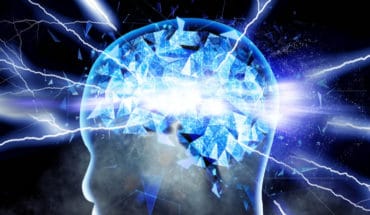Vitamin D the clue to more autism spectrum disorder in boys: A deficiency in vitamin D on the mother’s side could explain why autism spectrum disorder (ASD) is three times more common in boys, say researchers from The University of Queensland.
In their latest study, Professor Darryl Eyles and Dr Asad Ali from UQ’s Queensland Brain Institute found vitamin D deficiency during pregnancy caused an increase in testosterone in the developing brain of male rats.
“The biological cause of autism spectrum disorder is unknown but we have shown that one of the many risk factors—low vitamin D in mothers—causes an increase in testosterone in the brain of the male foetuses, as well as the maternal blood and amniotic fluid,” Professor Eyles said.
“In addition to its role in calcium absorption, vitamin D is crucial to many developmental processes.
“Our research also showed that in vitamin D-deficient male foetuses, an enzyme which breaks down testosterone was silenced and could be contributing to the presence of high testosterone levels.”
Professor Eyles’ previous research has shown that vitamin D plays a critical role in brain development and that giving vitamin D supplements to mice during pregnancy completely prevented ASD-like traits in their offspring.
Co-author Dr Ali said that excessive exposure of the developing brain to sex hormones like testosterone was thought to be an underlying cause of ASD, but the reasons remained unclear.
“Vitamin D is involved in pathways controlling many sex hormones,” Dr Ali said.
“When the rat mothers were fed a low vitamin D diet, it caused male foetal brains to have high levels of exposure to testosterone.”
Professor Eyles said the study was the first to show that a known risk factor for ASD alters testosterone in both the foetal brain and the mother’s blood — one possible contributor to why ASD is more prevalent in males.
“We have only studied one risk factor for ASD — vitamin D deficiency during development — our next step is to look at other possible risk factors, such as maternal stress and hypoxia – lack of oxygen – and see if they have the same effect,” he said.
This research is published in Molecular Autism (DOI:10.1186/s13229-020-00399-2).
It is a collaboration with The University of Western Australia’s Dr Andrew Whitehouse and funded by the National Health and Medical Research Council Australia and Queensland Centre for Mental Health Research.
- New lipid-based pathway discovered as key to memory formation - 25th June 2025
- Crucial link could explain how Alzheimer’s takes hold - 25th June 2025
- Understanding Your Mind Can Improve Daily Life - 25th June 2025







